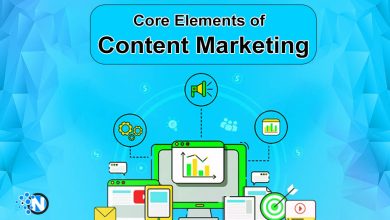6 Mistakes Educational Content Providers Make When Creating & Distributing Digital Content

Technologies bring radical changes to every sphere of the modern world, and education is no exception. Nowadays, e-learning is on the rise, making education more convenient, flexible, and cost-cutting. It has become even more popular after successfully facing the challenge of the COVID-19 pandemic. According to the research, the global online education market is expected to reach $319 billion by 2025, increasing from $187 billion in 2019. Similarly higher education marketing is growing at an exponential rate and leveraging the power of digital communications.
To stay on top of the market competition, digital education content providers have to be aware of and avoid crucial mistakes when creating and distributing their content. In this article, we will cover the most common of them.
1. Not Knowing the Audience
Many online content providers failed, thinking they had a brilliant idea, yet, not checking if there was demand for it. Thus, for the project to succeed, not only should the content be relevant and profound, but also audience-oriented.
When creating an e-learning course, you need to conduct research to identify your audience’s level of education, current job, knowledge in particular fields of study, information that could be useful for them, etc. Having a clear understanding of the target audience will help you create relevant content that provides value.
2. Failing to Organize the Content
The most common mistakes made by content providers include failing to include relevant information, creating too primitive or too complex content, and including only one type of content.
Failing to Include Relevant Information
Excessiveness never leads to positive results. Many content developers fall into a trap trying to cram into their educational course as much information as possible, forgetting about the needs of the learners.
Thus, when it comes to planning your content, make sure that you include only the most relevant information that meets your learners’ demands. Filling your course with irrelevant and superficial information decreases the value of your content, and vice versa, content that is overloaded with information will cause learners to feel overwhelmed.
Too Simple or Too Difficult Content
Learning something new implies both excitement and challenges. If the educational course is too easy, learners are unlikely to fulfill it since they will get bored and lose interest. Too complicated assignments lead to the same result, causing a lack of learner enthusiasm. Thus, it’s important to keep the balance, creating reasonably difficult content that will spur the learners to study without disheartening them. The research has shown that the most effective learning is achieved when performing the task with 85% accuracy.
Including Only One Type of Content
With the world getting digitized, our perception of educational information has changed. Top e-learning content providers have gained a competitive edge opting for various content distribution channels. According to the research, using different content types helps explain complex ideas within a short time and connect them to reality, allowing students to learn complex information more effectively and within a shorter time frame.
Implementing various digital publishing solutions to build appealing worksheets, e-books, templates, infographics, etc., and tools for creating engaging video and audio content will help you achieve better learner engagement and higher conversion rates, providing you with leading positions in the market.
3. Not Protecting Your Content With DRM Controls
Protection of unique content from plagiarism is one of the integral components for the survival and success of the educational project. Digital Rights Management (DRM) is one of the possible solutions to secure intellectual property. DRM software encrypts and packages valuable content (be it documents, videos, or audios), providing or restricting access to content. By purchasing such software educational content providers can prevent unauthorized access and distribution of their information.
4. Ignoring Responsive Design
Although many online learning content providers keep going mobile, letting their learners study on the go, they don’t put in enough effort to adapt their educational course to different devices. As a result, due to poor user interface and lack of responsiveness they fail to retain their audience.
To avoid such mistakes, ensure that your content can adapt to all screen sizes and resolutions, not only on desktop but also on tablets, mobile phones, etc.
5. Assuming a Lesson Taught is a Lesson Learned
Different learners have different abilities. Thus, the lesson taught is not always the lesson learned. Although the majority of students will do their best to prepare for the test, they will barely remember the majority of the information a few days after the test completion, let alone putting it into practice.
Therefore, successful educational content providers create a content distribution strategy to make sure the learners can get the content via channels that suit them most.
6. Failing to Deliver What Promised
Breaking promises is the easiest way to undermine learners’ trust and destroy the customer experience. Providing your learners with false expectations to gain their loyalty won’t do any good for your business since it’s like setting a time bomb. Sooner or later it will explode resulting in poor conversion, financial losses, and tarnished reputation of your project. Thus, be realistic and honest, promising only results that can be achieved. This way, you will be able to strengthen your relationships with learners rather than pushing them away.
Final Thoughts
E-learning is the present and the future of modern education. By using innovative technologies, online learning content providers empower their customers with personalized, time- and cost-efficient educational solutions.
However, it’s becoming more difficult to draw and keep learners’ attention due to the tough market competition in this sphere. If you fail to deliver interesting, engaging, and well-organized content via different distribution channels, your learners are likely to shift the focus towards your competitors. Thus, to achieve leading market positions it’s crucial to devote much time and effort to planning content strategy and keep in mind the common mistakes described in this article.




